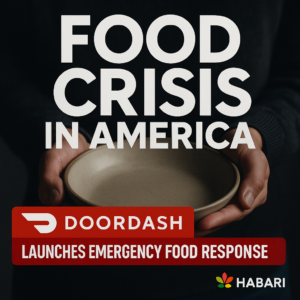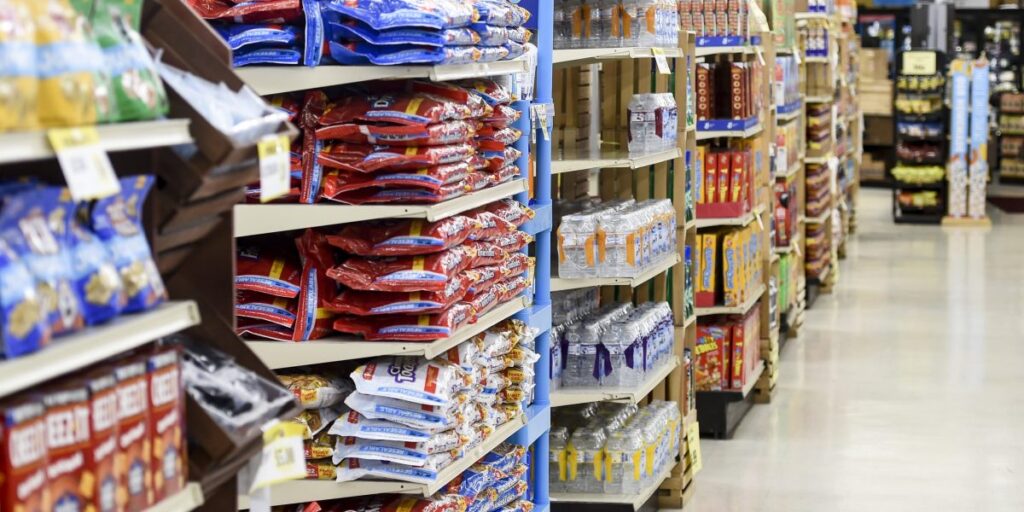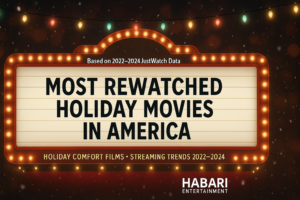Let’s be honest, 2025 hasn’t exactly been easy on our wallets, especially when it comes to something as basic and essential as food. Whether you’re picking up groceries for a big family or just trying to feed yourself with meals that are tasty and nutritious, it’s easy to feel like you’re constantly battling rising food prices. And no one wants to live off instant noodles just to keep their grocery bills in check, right?
The good news? Saving money on food without sacrificing quality is totally possible. You just need the right mix of strategy, creativity, and a little willingness to break a few old habits. Whether you’re dealing with inflated produce prices, skyrocketing meat costs, or a general sticker shock every time you walk into a grocery store, this guide is here to help you navigate it all. So, let’s dig in and talk about how you can make smarter food choices in 2025 while still enjoying food that’s good for your body, your taste buds, and your bank account.
Why Food Prices Are So High in 2025 (Yep, You’re Not Imagining It)
If you’ve felt like your weekly grocery run is slowly turning into a luxury shopping spree, you’re not alone. Inflation didn’t just hit housing, gas, or utilities, it also found its way to your fridge. Climate change, global supply chain hiccups, labor shortages, higher transportation costs, and increased demand for certain foods have all joined forces to crank up prices. Everything from leafy greens to beef, eggs, and even oats has gone up, and it doesn’t seem to be slowing down anytime soon.
What makes it even more frustrating is the fact that many of us are trying to eat better, more whole foods, fewer processed ingredients, and better nutrition overall. But when a bag of organic spinach costs more than a fast-food combo meal, it can feel like the system is rigged. So the challenge becomes: how can we continue to eat high-quality food without breaking the bank?
Let’s explore how.
Tip #1: Buy Seasonally and Locally—Yes, It Still Works
You’ve probably heard this tip before, but it’s one of those classics that still works maybe even more so in 2025. Buying fruits and vegetables that are in season doesn’t just give you fresher flavor and better nutrition, it’s also easier on your wallet. When produce is in peak harvest, supply is up, and prices drop. For example, strawberries in June are going to cost way less than they do in December when they’ve been flown across the world just to hit your local shelf.
Shopping at farmer’s markets or joining a local CSA (Community Supported Agriculture) can also make a big difference. You’re cutting out the middlemen, supporting local growers, and often getting better prices on fresh, seasonal goods. Plus, you’re reducing your carbon footprint too so it’s a win-win.
Tip #2: Plan Your Meals Like a Pro (But Keep It Simple)
Meal planning doesn’t mean you need to become a Pinterest-perfect chef with a color-coded calendar and a thousand containers. It just means thinking ahead. When you plan your meals around what you already have at home and what’s on sale that week, you’re automatically saving money and reducing waste.
Let’s say chicken thighs are on sale, and sweet potatoes are in season. You can build a few meals around that. Maybe a sheet pan dinner, a curry, and some tacos. Planning ahead keeps you from that dreaded “what should I eat tonight?” panic that leads to overpriced takeout or emergency grocery trips where you buy way more than you need.
Tip #3: Don’t Sleep on Store Brands and Bulk Bins
Back in the day, store brands had a bit of a reputation for bland cereal, off-brand snacks, and products that just felt low quality. But today? Most grocery stores have seriously stepped up their game. Store brands now often offer the same (or better) quality as name brands, and they’re usually way cheaper.
Another money-saving gem? Bulk bins. Whether it’s grains, beans, spices, or nuts, buying just what you need in bulk means you’re paying for the food, not the packaging. It also gives you the freedom to try small amounts of new things without committing to an expensive full-sized product.
Tip #4: Embrace the Power of Frozen
Here’s a secret: frozen fruits and vegetables are just as nutritious as fresh sometimes even more so. Why? Because they’re picked and frozen at peak ripeness. In 2025, with fresh produce prices climbing higher and higher, frozen options are a fantastic way to keep quality on your plate without draining your wallet.
Whether it’s frozen berries for smoothies, mixed vegetables for stir-fry, or frozen spinach for soups, having a stash in your freezer gives you options, saves money, and reduces food waste since they last way longer than fresh. Just make sure you check the labels and go for the ones without added sauces, sugars, or salt.
Tip #5: Learn the Art of Food Swaps
Another great way to stretch your food budget without sacrificing quality is to get comfortable with swapping out expensive ingredients for more affordable alternatives. Instead of pricey pine nuts in pesto, try using sunflower seeds or walnuts. Swap out red meat for lentils or beans in a hearty chili or pasta sauce. Use canned fish like tuna or sardines in place of fresh seafood for salads or sandwiches.
These swaps keep your meals flavorful and nutritious while cutting down on costs. It’s all about being flexible and creative with what you have.
Tip #6: Cook Once, Eat Twice (Or Three Times)
In a time when both food prices and our schedules are out of control, batch cooking is your best friend. Making large portions of a dish and stretching it across a few meals saves time, money, and effort. Think chili, soups, casseroles, stir-fry, and pasta dishes that hold up well for a couple of days and can be repurposed in different ways.
Made some roasted veggies for dinner? Toss the leftovers into a wrap for lunch the next day. Cooked a big pot of rice? Use it in stir-fry one day and a burrito bowl the next. You get the idea.
Tip #7: Don’t Let Good Food Go to Waste
Wasting food is basically throwing money in the trash. In 2025, it’s more important than ever to reduce food waste at home. Start by getting real about what’s actually in your fridge and pantry. Keep a running list on your phone or a whiteboard on your fridge, and make a habit of using up what you already have before buying more.
Also, learn to love your leftovers. Get creative and turn last night’s dinner into something new. A leftover roasted chicken can become soup, tacos, or a grain bowl. And don’t automatically toss foods because of “best by” dates. A lot of those are about quality, not safety. Trust your senses, smell, look, and taste (when appropriate).
Tip #8: Grow What You Can (Even if It’s Just Herbs on the Windowsill)
You don’t need to become a full-blown homesteader with chickens and an acre of land. Even just growing a few herbs in a pot by the window can save you money and add serious flavor to your meals. Fresh basil, cilantro, parsley, and mint can get expensive at the store, and they often go bad quickly. But when you grow them yourself, you snip off what you need, and they just keep on growing.
If you’ve got a little more space, a balcony, a small yard, or even a community garden you can take it a step further and grow tomatoes, peppers, lettuce, or green onions. The startup cost is minimal, and the payoff is fresh, healthy food right at your fingertips.
Tip #9: Make Snacks Work for You (And Your Budget)
We all had snacks. Whether it’s a mid-afternoon bite, something between Zoom calls, or a little treat before bed snacks are part of our lives. But convenience snacks are also where money disappears fast. Those individually wrapped protein bars, fancy popcorn bags, and pre-cut fruit trays might seem harmless, but they add up quickly.
Make your own snack packs at home hard-boiled eggs, DIY trail mix, yogurt with frozen fruit, or even a few pieces of dark chocolate with almonds. And hey, when you want a treat that still feels fun, grab something like Farmer Jon’s Popcorn, it hits the spot without wrecking your budget or your standards.
Tip #10: Use Tech and Apps to Your Advantage
There are a ton of free (and paid) apps out there in 2025 that can help you track grocery prices, find coupons, and reduce waste. Apps like Too Good To Go or Flashfood let you grab surplus food from stores or restaurants at a fraction of the cost. Others help you build meal plans, create shopping lists from sale flyers, or alert you when something you often buy goes on discount.
Also, joining your grocery store’s loyalty program can pay off. Most of them offer exclusive discounts, digital coupons, and points that add up to savings. It might take a few extra taps on your phone, but it’s worth it.
Tip #11: Don’t Chase Perfection—Just Aim for Progress
It’s easy to feel overwhelmed by all the food-related advice floating around, buy organic, eat clean, avoid seed oils, go gluten-free, don’t eat this, do eat that. In 2025, eating healthy can feel more confusing than ever. But the truth is, you don’t need to follow every single “rule” to eat well.
Focus on what matters most: real, whole foods as often as possible, a balance of protein, carbs, and healthy fats, and food that actually makes you feel good. If that means buying conventional instead of organic apples because it’s what you can afford? That’s okay. If your favorite bread isn’t gluten-free but it keeps you full and happy? Go for it. You’re doing great.
Final Thoughts: You Can Eat Well on a Budget in 2025
Food prices may be high, but that doesn’t mean your food quality has to drop. By shopping smart, planning ahead, cooking more often, and getting a little creative, you can enjoy delicious, satisfying meals without blowing your budget. It’s not about being perfect, it’s about being intentional.
So take a deep breath, pull out that grocery list, and know that every small step you take toward smarter shopping and better eating adds up. And hey, if tonight’s dinner is a frozen veggie stir-fry with leftover rice and some pantry spices? That’s not just dinner, that’s a budget win and a high-quality meal.











More Stories
Suspect Arrested After Deadly Tempe Marketplace Shooting Linked to Online Sale
JustWatch US Streaming Charts: Massive Stranger Things Surge and Hit Movie Wicked Dominate November Streaming Charts
Police ID two motorcyclists killed after fight, shooting and crash near I-17 in Phoenix